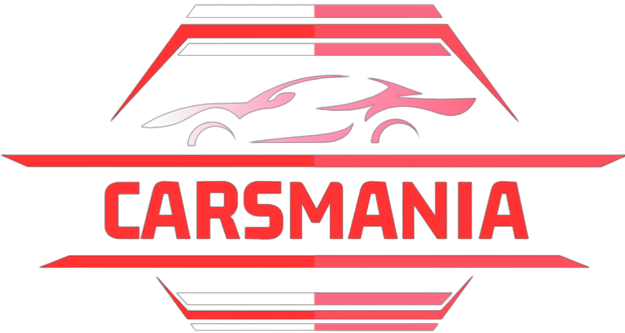Contents
- 1 Introduction
- 2 After 35 years, the Honda Accord is still going strong.
- 3 The Honda Accord was introduced in 1976, and it was originally called the CVCC.
- 4 The original Accord had a 1.8-liter SOHC I-4 engine and a four-speed manual transmission.
- 5 In 1984, the first generation of Accords with VTEC engines were released.
- 6 The second generation of Accords had a 1.6L DOHC I-4 engine with variable valve timing (VTEC).
- 7 The third generation of Accords had a 2.0L DOHC I-4 engine with VTEC technology as well as Vehicle Stability Assist (VSA) and traction control systems (TCS).
- 8 For the fourth generation of Accords, Honda changed up their engines to make them more efficient and powerful, while also reducing emissions. This included adding direct injection and turbo charging.
- 9 The Honda Accord is one of the most reliable vehicles on the road today
- 10 Conclusion
Introduction
The Honda Accord is one of the most recognizable and beloved Japanese cars in history. It has been around for over 35 years, and it has undergone many changes during that time. The first generation of Accords was introduced in 1976 as the CVCC. This generation only lasted until 1981 when it was replaced by the second generation Accord which featured VTEC engines and Vehicle Stability Assist (VSA) technology among other improvements. In 1989, Honda released the third generation which included direct injection technology on their engines among other upgrades such as variable valve timing (VTEC). The fourth generation came out in 2007 with a higher emphasis on fuel efficiency while still keeping all of its legendary reliability intact!
After 35 years, the Honda Accord is still going strong.
The Honda Accord has been a staple in America since its introduction in 1976, and it shows no signs of slowing down. Over the past 35 years, this vehicle has sold more than 14 million vehicles worldwide–and that’s not even counting the countless other Accords that were built by other manufacturers (such as Toyota).
The Accord is known for its reliability, fuel efficiency and affordability. In fact, according to Consumer Reports’ Reliability Survey for 2018-19 model year vehicles released on Tuesday (November 6), the Honda Accord ranks first among all cars in terms of owner satisfaction with an average overall score of 86 out of 100 points. It also scored high marks across all categories including performance/durability (89); comfort/convenience features (85); safety features & technology (84); quality materials/craftsmanship inside cabin space outside cabin space along with fit & finish inside cabin space outside cabin space along with fit & finish exterior styling design styling design exterior color options color options interior layout ergonomics controls layout ergonomics controls internal storage compartment space storage compartment space external cargo hauling capacity cargo hauling capacity fuel economy mpg city highway combined highway mileage mpg city highway combined highway mileage cost per mile driven per mile driven total ownership costs total ownership costs total ownership cost over five years
The Honda Accord was introduced in 1976, and it was originally called the CVCC.
The Honda Accord was introduced in 1976, and it was originally called the CVCC. This stands for “Compound Vortex Controlled Combustion” and refers to a technology that allowed higher compression ratios without knocking (pre-ignition). It also paved the way for Honda’s VTEC system, which allows both high-revving performance or good economy depending on how you drive it.
The original Accord was a two-door coupe with an inline 4-cylinder engine displacing 1,781 cc (108 cu in) producing 80 hp (60 kW). The first generation of Accords were available only as front wheel drive models with either manual or automatic transmissions; there were no all wheel drive options available until later generations when they became more popularized by manufacturers like Subaru who had been making AWD cars since 1969!
The original Accord had a 1.8-liter SOHC I-4 engine and a four-speed manual transmission.
The first generation of the Honda Accord was introduced in 1976 and called the CVCC. It had a 1.8-liter SOHC I-4 engine and a four-speed manual transmission, but this did not stop people from buying it. Sales were slow at first, but by 1980 they had risen dramatically thanks to help from another car company: Toyota.
In fact, many early Accords were sold alongside Toyotas because both companies were owned by their respective countries’ governments (Japan for Honda and America for Toyota). The two automakers even shared technology at one point!
In 1984, the first generation of Accords with VTEC engines were released.
It’s hard to believe that the Accord has been around for nearly 40 years. The first generation of Accords with VTEC engines were released in 1984, and since then, the Honda has become one of the most popular cars on the road today.
The first-generation Accords had a 1.6L DOHC I-4 engine with variable valve timing (VTEC). This allowed for both high performance and excellent fuel economy–a combination that continues to be popular today!
The second generation of Accords had a 1.6L DOHC I-4 engine with variable valve timing (VTEC).
In 1996, the second generation of Accords was introduced with a 1.6L DOHC I-4 engine that used variable valve timing (VTEC). VTEC is a technology that allows an engine to run on two different camshaft profiles: one for low-end torque and another for high-rpm power output. This can be used to improve fuel economy and power output simultaneously by optimizing the operating range of each cylinder head independently during operation.
In its first iteration, VTEC was only available on Honda’s V6 engines; today it still remains exclusive to those models but has been expanded upon greatly since its inception almost 30 years ago.
The third generation of Accords had a 2.0L DOHC I-4 engine with VTEC technology as well as Vehicle Stability Assist (VSA) and traction control systems (TCS).
The third generation of Accords had a 2.0L DOHC I-4 engine with VTEC technology as well as Vehicle Stability Assist (VSA) and traction control systems (TCS). Honda started using direct injection in their engines, which helped improve efficiency and power output. The VTEC system was also used to improve efficiency by switching between two camshaft profiles depending on the speed at which you’re driving and the amount of torque being demanded by your car’s engine at any given moment.
Vehicle Stability Assist (VSA) is an electronic stability control system that works with TCS to keep your vehicle from losing control when driving through turns or braking too hard on slippery surfaces such as ice or snow; it will automatically activate brakes if necessary so you don’t lose control over where your car goes during these situations!
For the fourth generation of Accords, Honda changed up their engines to make them more efficient and powerful, while also reducing emissions. This included adding direct injection and turbo charging.
For the fourth generation of Accords, Honda changed up their engines to make them more efficient and powerful, while also reducing emissions. This included adding direct injection and turbo charging.
The 2.0L DOHC I-4 engine with VTEC technology as well as Vehicle Stability Assist (VSA) and traction control systems (TCS).
The Honda Accord is one of the most reliable vehicles on the road today
The Honda Accord is one of the most reliable vehicles on the road today. Since its introduction in 1976, it has gone through five generations of development and each one has seen improvements in engine technology, safety features, and fuel economy.
The first generation Accord was manufactured from 1976 to 1981 with only one engine option: an inline-four engine with an output of 80 horsepower at 5200 rpm and 109 lb-ft torque at 4000 rpm. It featured a five-speed manual transmission or three-speed automatic transmission with a 2nd gear overdrive feature (which allowed this car to reach highway speeds without having to shift into 6th gear). The second generation Honda Accord came out in 1982 with added powertrain options including a 2nd generation DOHC V6 engine rated at 100 hp @ 5800 rpm along side its existing 4 cylinder counterpart which was also upgraded from 80 hp @ 5200 rpm/109 lb ft @ 4000 rpm.[1]
Conclusion
The Honda Accord is one of the most reliable vehicles on the road today. It has been around for 35 years and shows no signs of slowing down. The first generation of Accords was introduced in 1976, and it was originally called the CVCC. This vehicle had a 1.8-liter SOHC I-4 engine and four-speed manual transmission. In 1984, the first generation of Accords with VTEC engines were released; these models had a 1.6L DOHC I-4 engine with variable valve timing (VTEC). The second generation of Accords had a 2.0L DOHC I-4 engine with VTEC technology as well as Vehicle Stability Assist (VSA) and traction control systems (TCS). Honda changed up their engines again for their fourth generation models by adding direct injection and turbo charging capabilities; this increased efficiency while reducing emissions

